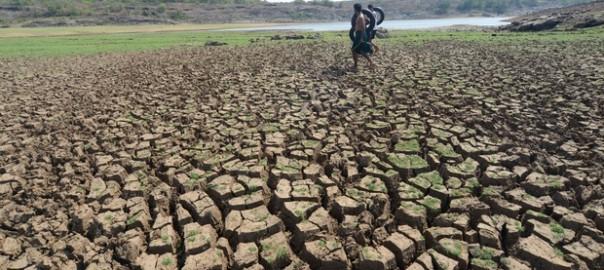Sachi Satapathy & Sujit K Pruseth*
The noted agricultural scientist M S Swaminathan made a stimulating observation about the farmers; ‘please don’t make any experiment on farmers because they are poor’. Regrettably, there have been many experiments albeit politically, leading the farmers to end their lives and the experiment continues even after they commit suicide. The poor farmers, who put his sweat and blood to feed his family and countrymen, have to pay heavy price. The farming land of Odisha has suddenly turning out to be the graveyards for the farming community with the abetment of farmers’ suicides. Particularly, the western Odisha, which has earned the distinction of being the ‘rice bowl’ and placed adjacent to the so called ‘modern temple of India’ i.e., the Hirakud dam, has become the hot bed of agrarian crisis.
Odisha government’s most insensitive approach to farmers have been reflected in different ways time and again. The state decided to achieve 35 per cent irrigation from the total 6.165 million hectares cultivable land in the 314 blocks during 2005-06.However, the CAG report finds that 67 out of the 95 blocks in western Odisha had not received the minimum 35 percent irrigation facilities. These blocks in western Odisha are now experiencing frequent cases of farmers’ suicide. A government report says that number of small, medium and large scale farmers has dropped by 460,000. The most worrying factor, which will hit the sector the most is the falling contribution of agriculture to the gross state domestic product over the years in the state as it fell from 13.7 per cent in 2013-14 to 12.33 per cent in 2014-15.
The distress sale of farmers’ product is always an issue in the state as it is being brought by members in the recently concluded legislative assembly session; for example; the government agencies in the current year lifted only 200 tons of potato against the target of procuring 29,000 tons. The government completely failed to attract farmers to continue to this traditional occupation because of little support to irrigation, non-availability of workforce, low market value of their produce.
The agrarian crisis in Odisha indicates towards the multi-dimensional nature of the crisis. The NSS 70th Round report released in 2014 reveals that out of total rural household in the state, 57.5 per cent constitute agriculture households, that itself indicates critical dependence on agriculture as the only source of livelihood. The productivity of rice and total food grain witnessed a decline over last few years in the state; as one can see the decline of food grain from 7737 million tons in 2003-04 to 7616 million tons in 2011-12. The fluctuating nature of rice production over the years remains as a pointer towards the increasing vulnerability of agricultural community.
Though the Odisha government claims that the ground level credit flow for agriculture has gone upto Rs.10454 cr in 2012-13 from Rs.1316 cr in 2003-04, the reach of the flow to the needy farmers has extremely negligible. In addition to this, inadequate institutional credit facilities and lack of easy access of this benefit has aggravated the problem over the period of time. The ubiquitous presence of informal credit structure with an exorbitantly high rate of interest increases the vulnerability of the farmers who depend on this informal credit structure instead of institutional and formal credit structure. The National Sample Survey data indicate that most marginal farmers having less than one hectare land invariably depend on the informal structure. The credit arrangements affects many generations making the agrarian crisis a ‘chronic one’ and the farmers getting trapped in the vicious cycle of indebtedness and poverty. Here lies the crucial key; towards solution by ‘critical targeted interventions’ through customized policies.
The Odisha government’s attempts in finding solution to each and every problem with the provision of 25 kg of rice at Rs.1-per-kg every month to six million poor families is complicating the rural agricultural situation in the state. While continuing this Rs.1 –per-kg rice scheme, government must come up with a concrete plan to insure all crops and farmers with an affordable insurance cover plan and take necessary measures to check growing indebtedness incidence, which is now reached to 57 per cent among farmers and increasing. Odisha Chief Minister must come up with a farmer friendly incentives and subsidy plan and provide food-health-education security cover to small and marginal farmers and his family members and convert the present approach of risk of loss and individualised burden to a collective and shared government burden. This can only offer a silver lining to farmers and farming in the state at a backdrop of black cloud of agrarian crisis.
(Authors are New Delhi Based lead policy and development experts and extensively studied Odisha’s poverty and backwardness- [email protected])



Comments are closed.